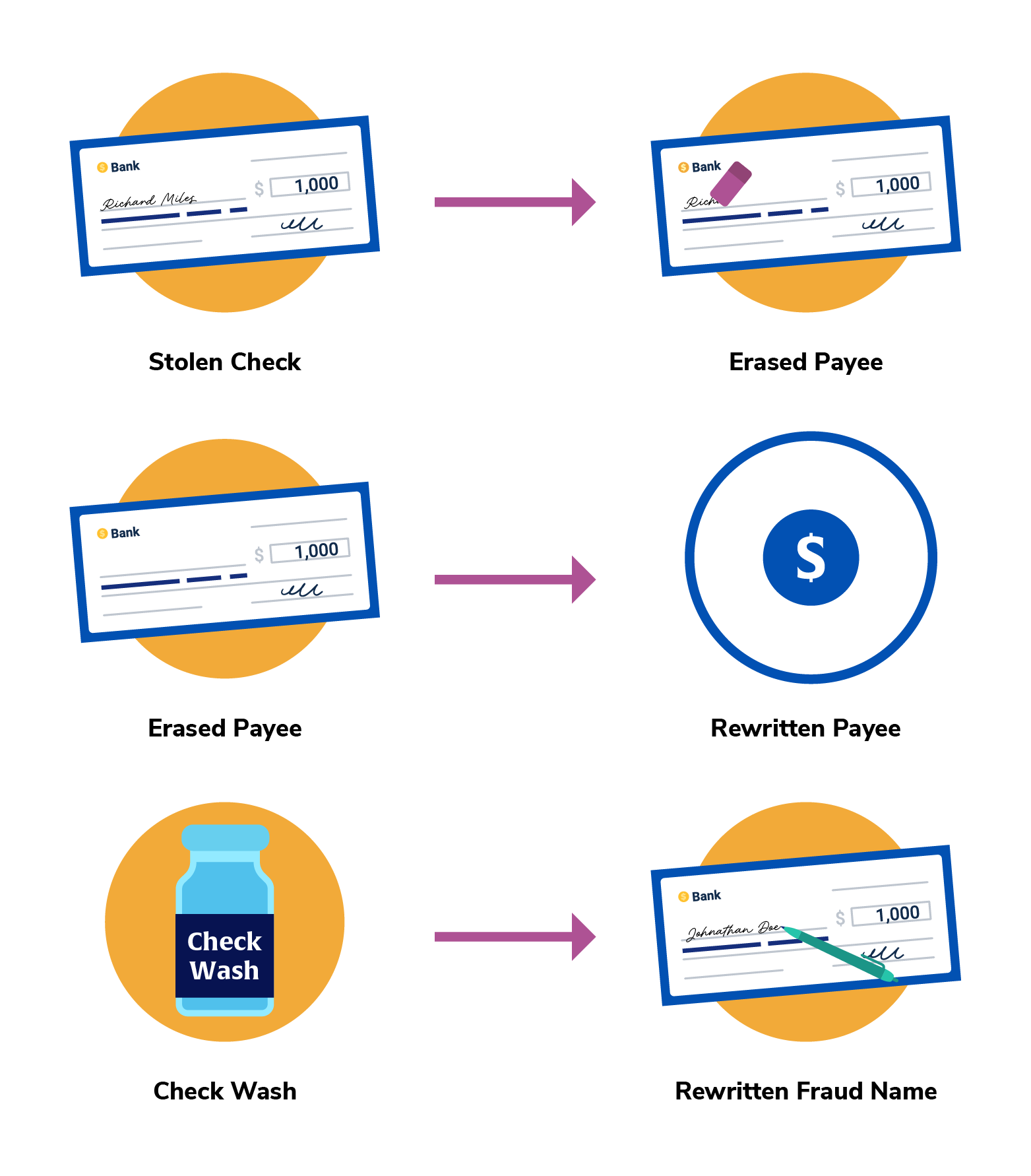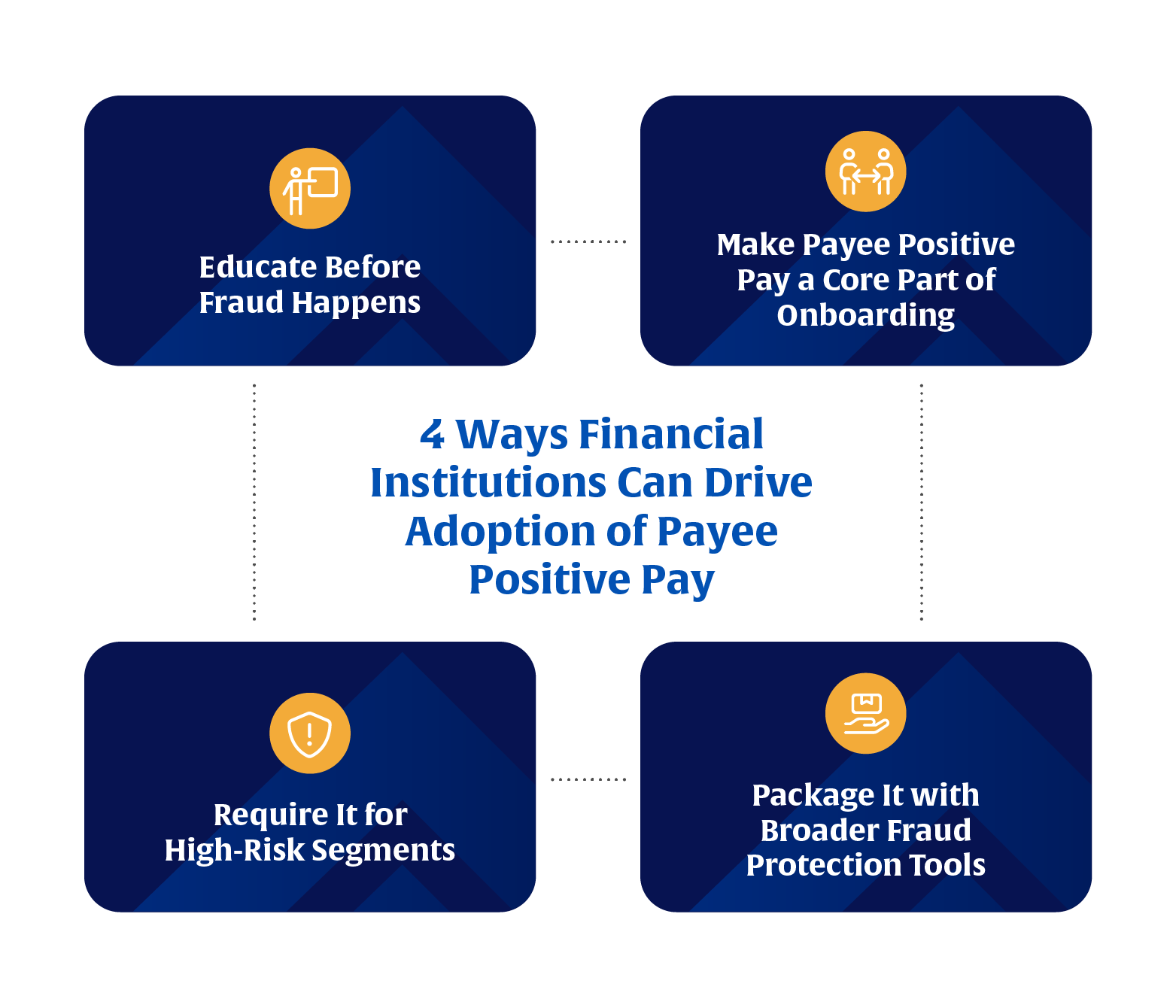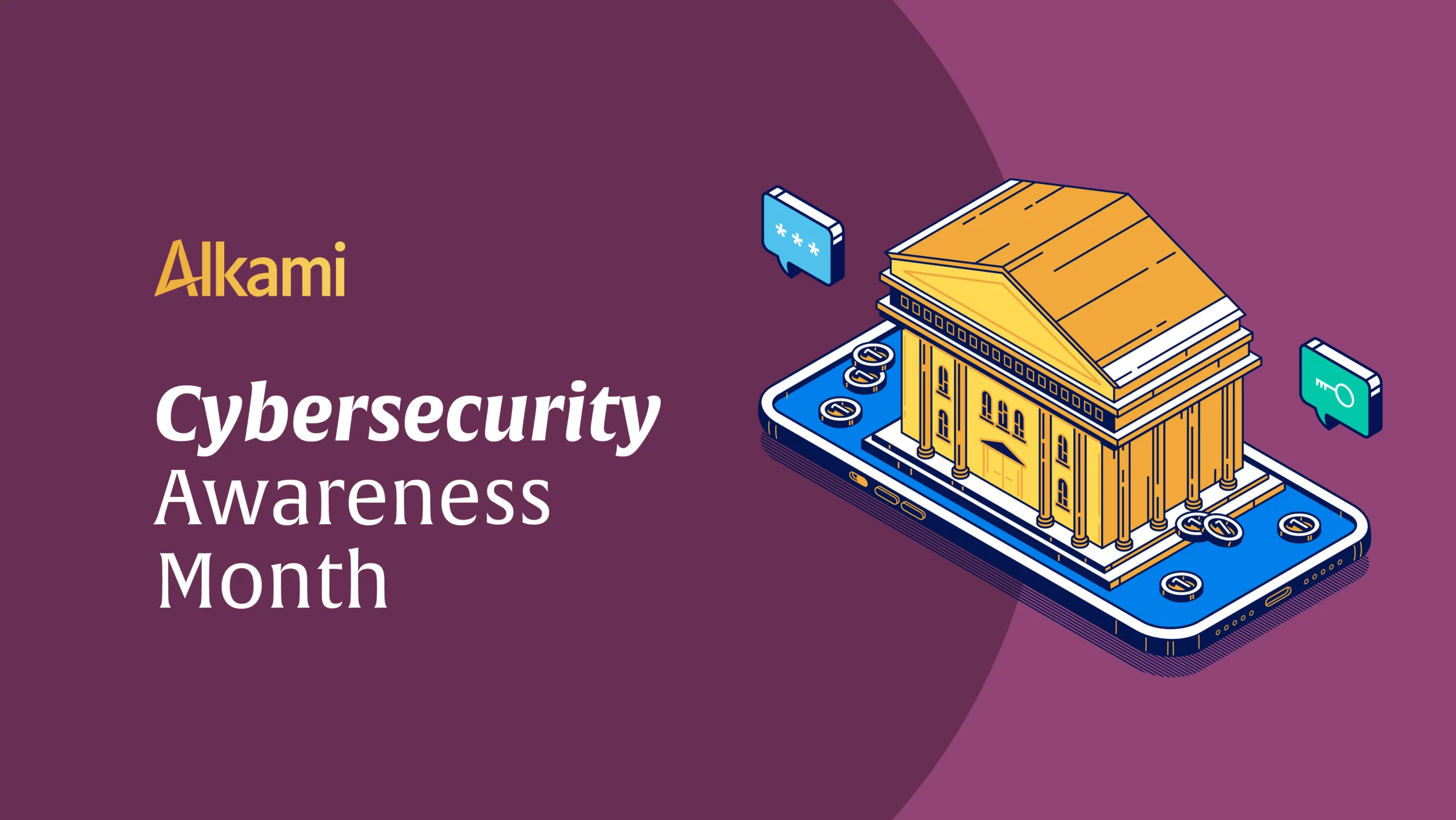Learn how payee match and payee positive pay can help banks and credit unions proactively combat check fraud and build stronger business client relationships.
Despite the rise of real-time payments and digital wallets, one legacy payment type continues to hold surprising influence in the world of business banking: the paper check.
And unfortunately, fraudsters have noticed.
According to the 2025 AFP Payments Fraud and Control Survey, 63% of organizations experienced check fraud attempts—more than any other payment method. Check washing, counterfeit checks, and altered payee names are on the rise, costing financial institutions and their business and commercial clients millions, further eroding trust with these highly valued relationships.
Payee match, a key feature of payee positive pay, provides a highly effective defense against today’s most common check fraud tactics. Yet despite its proven value, adoption remains stubbornly low. Only 29% of financial institutions are satisfied with how many of their business clients are actively using check positive pay tools. The gap between availability and actual usage continues to leave clients—and financial institutions—exposed.
So what’s really holding back adoption—and what can financial institutions do to change that?
The Scope of the Problem: Why Payee Match Matters More Than Ever
Check Fraud is no longer a risk—it’s a certainty. According to Datos Insights, 94% of bank executives reported an increase in check fraud among business clients.
- Large banks (assets > $100B): Over $15 million in check fraud losses
- Mid-sized banks ($31B–$100B): $1M to $3M in losses
- Smaller banks (< $10B): Losses in the hundreds of thousands
The most common attack method? Check washing—where fraudsters steal a legitimate check, use chemicals to erase the original payee name, then change the payee name to themselves. Check washing is a tactic that often goes undetected without additional layers of verification like payee match, which compares the payee name on the cleared check to the one originally issued.

What Is Payee Match? And How Does it Work?
Payee match is an advanced form of check positive pay that verifies three key data points before a check clears:
| Feature | Check Positive Pay | Payee Positive Pay |
| Check Number Match | ✅ | ✅ |
| Dollar Amount Match | ✅ | ✅ |
| Payee Name Match | ❌ | ✅ |
When a business issues a check, it submits details in a check issuance file—including the routing number, account number, check number, amount, and payee name—to its financial institution. When a check drawn on an account enrolled in payee positive pay is later presented for payment, the system compares those details. If there’s a mismatch, the check is flagged as an exception for the financial institution or account holder to review and accept or return the check. Payee positive pay can also be done at the teller line for checks being presented for cashing.
This simple step makes all the difference when dealing with altered checks or sophisticated fraud attempts.
Common Adoption Barriers for Payee Match
Despite its effectiveness, payee positive pay still faces significant adoption challenges. Here’s what’s slowing things down:
- Reactive promotion: 42% of financial institutions only offer it after fraud has occurred.
- Clunky integration: 35% of banks say it’s difficult for businesses to adopt within their current workflows.
- Lack of awareness: 23% of small and midsize businesses say their bank never even mentioned it.
These aren’t just barriers—they’re opportunities for forward-thinking financial institutions to step in and lead.
4 Ways Financial Institutions Can Drive Adoption of Payee Positive Pay

1. Educate Before Fraud Happens
Many business clients do not realize how exposed they are until it’s too late. Shift that narrative by making fraud education part of the client experience.
Consider the following education tactics:
- Embed alerts or banners in online banking platforms
- Host short, value-packed webinars or lunch-and-learns discussing fraud trends and anti-fraud products
- Share anonymized case studies or loss examples by industry
- Highlight the financial, operational and reputational cost of frau
2. Make Payee Positive Pay a Core Part of Onboarding
Don’t treat payee positive pay like an add-on. Just like dual controls or multi-factor authentication (MFA), payee positive pay should be a default part of the account setup process for business clients—baked in, not bolted on.
How to reimagine the business onboarding experience:
- Include payee positive pay setup during treasury onboarding
- Offer automated upload tools from accounting software
- Turn it on by default for new accounts—opt-out, not opt-in
- Train teams to speak confidently to its value (beyond compliance)
4. Package It with Broader Fraud Protection Tools
Fraudsters don’t specialize—they experiment. Financial institutions should take a layered approach to fraud prevention that spans channels, users and transaction types. From smarter MFA to behavioral analytics to proactive tools like ACH positive pay, a multi-pronged strategy is essential. Explore how top institutions are combining tech and education to stay ahead of fraud.
Here’s how your institution can strengthen fraud prevention while increasing adoption:
- Pair check positive pay with ACH positive pay: Offer complimentary coverage for both paper-based and digital payment threats. Fraudsters don’t care about channels—your defenses shouldn’t either.
- Bundle into tiered treasury service offerings: Position positive pay as part of premium business banking packages, increasing perceived value while creating upsell opportunities.
- Promote as part of a “layered security” product suite: Combine with MFA, behavioral analytics, and transaction monitoring to offer comprehensive, multi-touchpoint protection.
These bundled strategies not only increase protection—they increase product stickiness and cross-sell opportunities.
Why Payee Match is Critical for Modern Fraud Prevention
In business banking, check fraud is no longer just a security concern—it’s a strategic threat.
The risk is well-documented, the solution exists, and the business case for adoption is clear. Yet too many financial institutions still treat payee positive pay as an optional add-on, rather than what it truly is: a core control in a modern fraud prevention strategy.
Adoption doesn’t just protect your business clients—it protects your reputation, reduces your exposure, and positions your institution as a proactive partner in an era where trust is everything.
The opportunity now is to lead.
Lead with education.
Lead with integration.
Lead with protection built into the products your clients already use.
Because if your institution isn’t making payee positive pay the standard, it’s only a matter of time before a fraudster makes the decision for you.
Want to see it in action?









